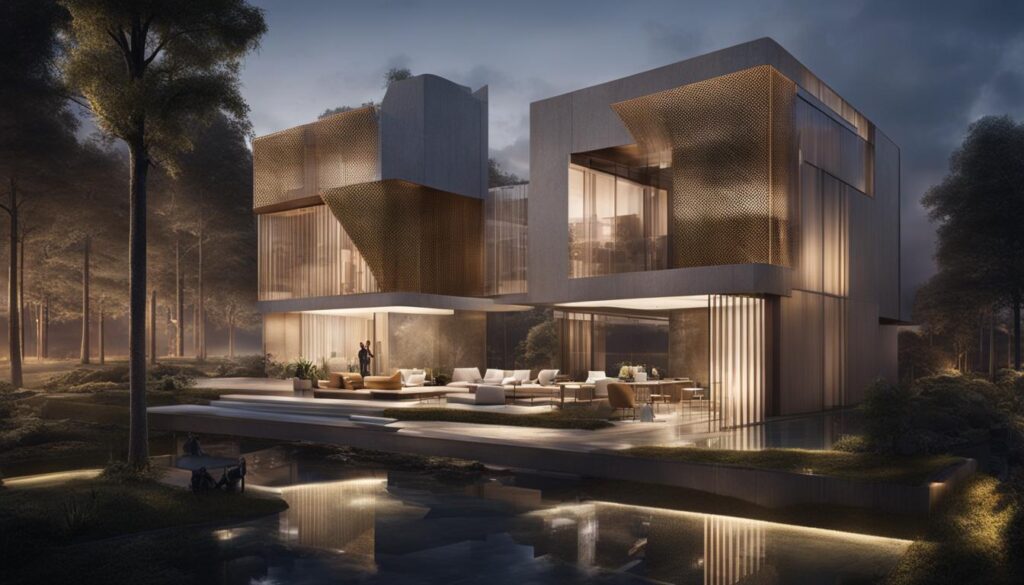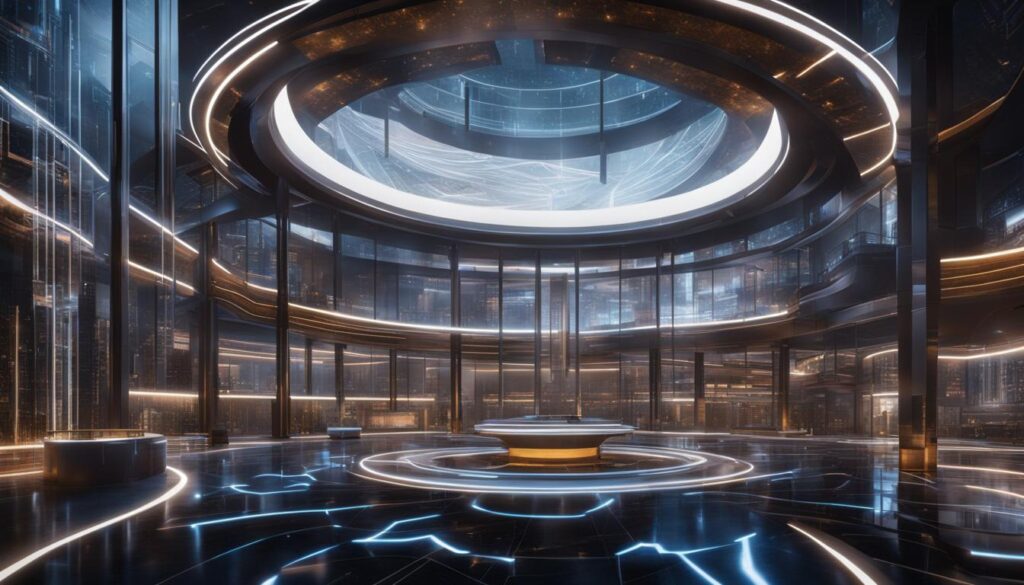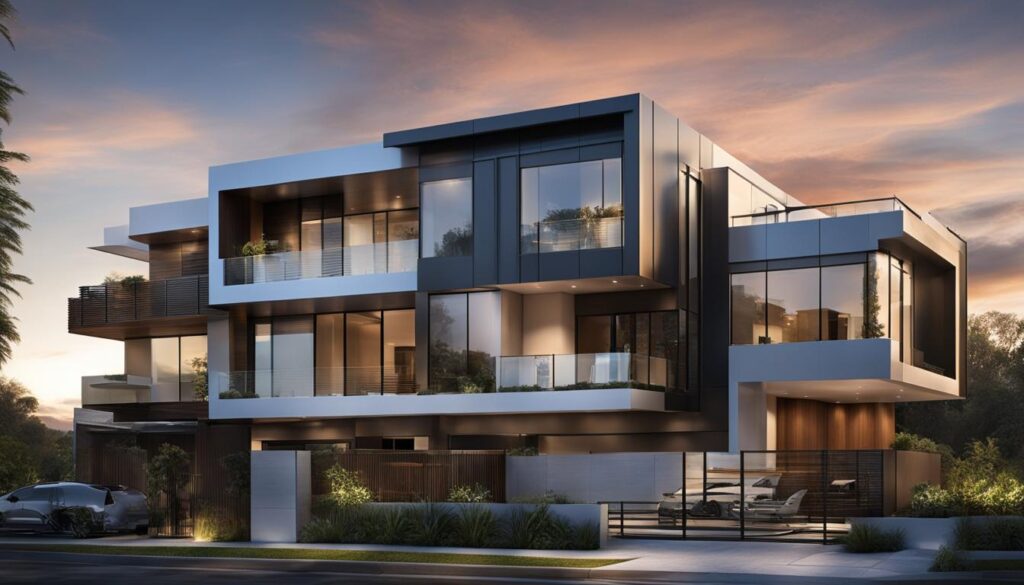We may earn money or products from the companies mentioned in this post.
User-Generated Content has become an increasingly important concept in the world of architecture. The term refers to the idea of crowd-sourcing ideas, feedback, and opinions from the community or end-users of a building or space. This innovative approach is transforming the architectural industry and reshaping the way we approach design and construction.
The incorporation of user-generated content in architecture has numerous benefits. By involving the public in the design process, architects can gain valuable insights into the needs and preferences of the community. It leads to increased community engagement and a greater sense of ownership and pride in the finished product. Additionally, user-generated content often results in more creative and innovative solutions, as a diverse range of perspectives are considered.
In this article, we will explore the impact of user-generated content in architecture, the available platforms and tools, and the best practices for implementing this approach in architectural projects.
Key Takeaways:
- User-Generated Content is an important concept in modern architecture
- Crowd-sourcing ideas and feedback from end-users can lead to more creative and innovative solutions
- Incorporating user-generated content in architecture can increase community engagement and a sense of ownership
- There are various platforms and tools available for architects to leverage user-generated content
- By implementing best practices, architects can effectively and successfully integrate user-generated content into their projects
The Impact of User-Generated Content in Architecture
User-generated content has revolutionized the field of architecture, providing numerous benefits and opportunities for architects. Let’s take a closer look at the various advantages of incorporating user-generated content into architectural projects.
Increased Community Engagement
By involving the community in the design process, architects can create projects that better reflect their needs and desires. This engagement can be achieved through online forums, social media, or community meetings. For example, architects designing a new housing development can gather input from potential residents on the type of amenities they would like to see in their living space, such as a community garden or a gym facility. This approach not only enhances the community’s sense of ownership but will also establish a stronger relationship between the community and the architect.
Creativity and Innovation
User-generated content provides architects with fresh and innovative ideas for their projects. For instance, architects can use social media channels to gather design inspiration from their followers, who can suggest design elements and provide feedback on proposed designs. This collaborative approach can inspire architects with new ideas and help them overcome design challenges that they might not have considered without the input of their followers.
Real-Life User-Generated Content Examples
To demonstrate some successful examples of user-generated content in architecture, let’s take a look at the Brooklyn Bridge Park project in New York City. The park was designed with extensive community engagement, where residents provided input and feedback on the park’s design. This approach resulted in a vibrant public space that met the needs of the local community. Another example is the Open House Melbourne event, which allows the public to explore iconic buildings and spaces in Melbourne, Australia, through guided tours and open access programs. This event provides architects with valuable feedback on their projects and encourages greater community participation in the design process.
As we can see, user-generated content has brought significant benefits to the architecture industry, providing a collaborative and innovative approach to design. Architects who incorporate user-generated content in their projects can develop stronger relationships with their communities and create unique and inspiring projects that truly reflect the needs and desires of their users.
Leveraging User-Generated Content in Architecture
User-generated content has revolutionized the way architects engage with their audiences, bringing unprecedented opportunities to collaborate with communities, stakeholders, and potential users. With the advent of digital platforms and tools, architects can now leverage user-generated content in a multitude of ways, from collecting feedback and insights to co-creating designs and sharing resources. In this section, we will explore some of the most effective user-generated content platforms and tools available for architects to maximize the impact of their projects.
User-Generated Content Platforms
There are many user-generated content platforms available for architects to tap into, each with unique features and benefits. Here are a few examples:
| Platform | Description |
|---|---|
| Architizer | An online community of architects and designers showcasing their work and connecting with potential clients and collaborators. |
| CoContest | A crowdsourcing platform for architectural competitions, inviting designers and architects to submit their proposals for real-life projects. |
| SketchUp | A 3D modeling software that allows architects to create and share their designs with clients and stakeholders in an interactive way. |
These platforms offer architects a range of possibilities to leverage user-generated content, including showcasing their portfolio, participating in competitions, and collaborating with other professionals.
User-Generated Content Tools
In addition to platforms, architects can also use various tools to engage with user-generated content and enhance their designs. Here are a few examples:
- Virtual Reality (VR) – allows architects to create immersive experiences for users and test their designs in a realistic environment.
- Social Media – enables architects to share their work, gather feedback, and engage with potential clients and collaborators.
- Crowdsourcing – invites users to participate in the design process by submitting ideas, feedback, or resources.
These tools not only facilitate the engagement with user-generated content but also encourage creativity and innovation in the design process.
In conclusion, leveraging user-generated content has become an essential strategy for architects to create meaningful and engaging designs that meet the needs and expectations of their users. By embracing digital platforms and tools, architects can tap into a vast network of resources and opportunities, co-create with communities, and shape the future of the architectural industry.
Strategies and Best Practices for User-Generated Content in Architecture
Implementing user-generated content in architecture projects can be a game-changer for architects looking to enhance community engagement and innovation. However, to make the most of this approach, architects need to implement effective strategies and best practices to ensure success. Here are some tips to get started:
1. Define Clear Objectives
Before implementing user-generated content in an architecture project, it’s crucial to define clear objectives for what you hope to achieve with this approach. Do you want to gather feedback from community members? Engage them in the design process? Increase innovation? By defining your goals, you can create a more effective strategy for incorporating user-generated content.
2. Choose the Right Platform
There are a variety of user-generated content platforms available, such as social media, design competitions, and online surveys. It’s important to choose the platform that works best for your project and target audience. For example, if you’re looking to engage a younger demographic, social media may be the best option.
3. Incorporate Feedback Wisely
When incorporating user-generated content into your project, it’s important to be selective about which feedback to incorporate. Not all ideas will be feasible or align with your project goals. Choose the feedback that adds value to the project and enhances its overall quality.
4. Collaborate with Community Members
Collaboration is key when incorporating user-generated content into architecture projects. By collaborating with community members, architects can not only gather valuable feedback but also build trust and foster a sense of ownership among community members.
5. Embrace Technology
Technology can be a powerful tool for architects looking to implement user-generated content. Utilizing tools such as virtual reality or interactive design platforms can enhance the experience for community members, making them feel more engaged and invested in the project.
6. Stay Ahead of the Curve
As with any approach, user-generated content in architecture is constantly evolving. To stay ahead of the curve, it’s important to stay up-to-date with current trends and best practices. Attend industry conferences, read relevant publications, and seek out new opportunities to learn and grow.
7. Measure Success
Finally, it’s essential to measure the success of your user-generated content strategy. Set measurable goals and track progress along the way. By measuring success, you can identify areas for improvement and continue to refine your approach for future projects.
Conclusion
As we’ve seen, User-Generated Content has become an essential element in today’s architectural landscape. By incorporating user-generated content, architects can not only engage with their communities more effectively but also foster creativity and innovation.
In this article, we’ve explored the impact of user-generated content in architecture and provided insights into the myriad platforms and tools available to architects. We’ve also outlined some best practices and strategies to help architects leverage user-generated content effectively.
By embracing user-generated content, architects can stay ahead of the curve and explore the endless possibilities it offers. As the architectural industry continues to evolve, we can expect to see an even greater role for user-generated content in shaping the future of the field.
FAQ
What is User-Generated Content in Architecture?
User-Generated Content in Architecture refers to the involvement of end-users or the general public in the creation and development of architectural projects. It can include ideas, feedback, or contributions from individuals who are not necessarily professional architects.
Why is User-Generated Content important in today’s architectural landscape?
User-Generated Content plays a crucial role in architecture as it fosters community engagement, encourages innovation, and brings fresh perspectives to design projects. It allows architects to tap into the collective intelligence and creativity of a wider audience, resulting in more inclusive and impactful architectural solutions.
Can you provide examples of the impact of User-Generated Content in architecture?
Certainly! Examples of the impact of User-Generated Content in architecture include crowdsourcing design ideas for public spaces, utilizing social media platforms to gather feedback on proposed architectural projects, and involving community members in the decision-making process for urban design initiatives.
What platforms and tools can architects leverage for User-Generated Content?
Architects can leverage various platforms and tools for User-Generated Content, such as online forums, social media platforms, dedicated design collaboration websites, and even virtual reality tools that allow users to provide real-time feedback on architectural designs.
What are the best practices for implementing User-Generated Content in architecture?
Some best practices for implementing User-Generated Content in architecture include clearly defining project goals and objectives, creating a user-friendly platform for engagement, actively seeking feedback and ideas from a diverse range of participants, and acknowledging and crediting contributors for their input.
What are the current trends in User-Generated Content within the architectural industry?
Current trends in User-Generated Content within the architectural industry include the use of augmented reality for virtual design collaboration, the integration of social media platforms for crowd-sourcing ideas, and the exploration of co-creation workshops where architects and end-users work together to co-design projects.
How can architects stay ahead of the curve with User-Generated Content?
To stay ahead of the curve with User-Generated Content, architects should actively follow emerging technologies, engage with online architectural communities, attend industry conferences and workshops, and continuously seek opportunities to collaborate with diverse stakeholders and users.
Affiliate Disclosure: This post may contain affiliate links. If you purchase through our link, we may receive a small commission, but at no additional cost to you. For more information, please see our Disclosure statement.



